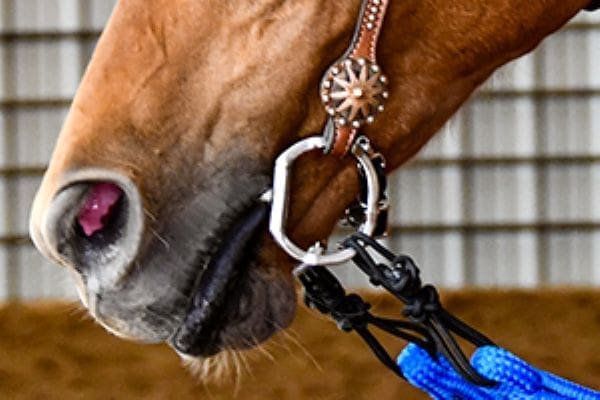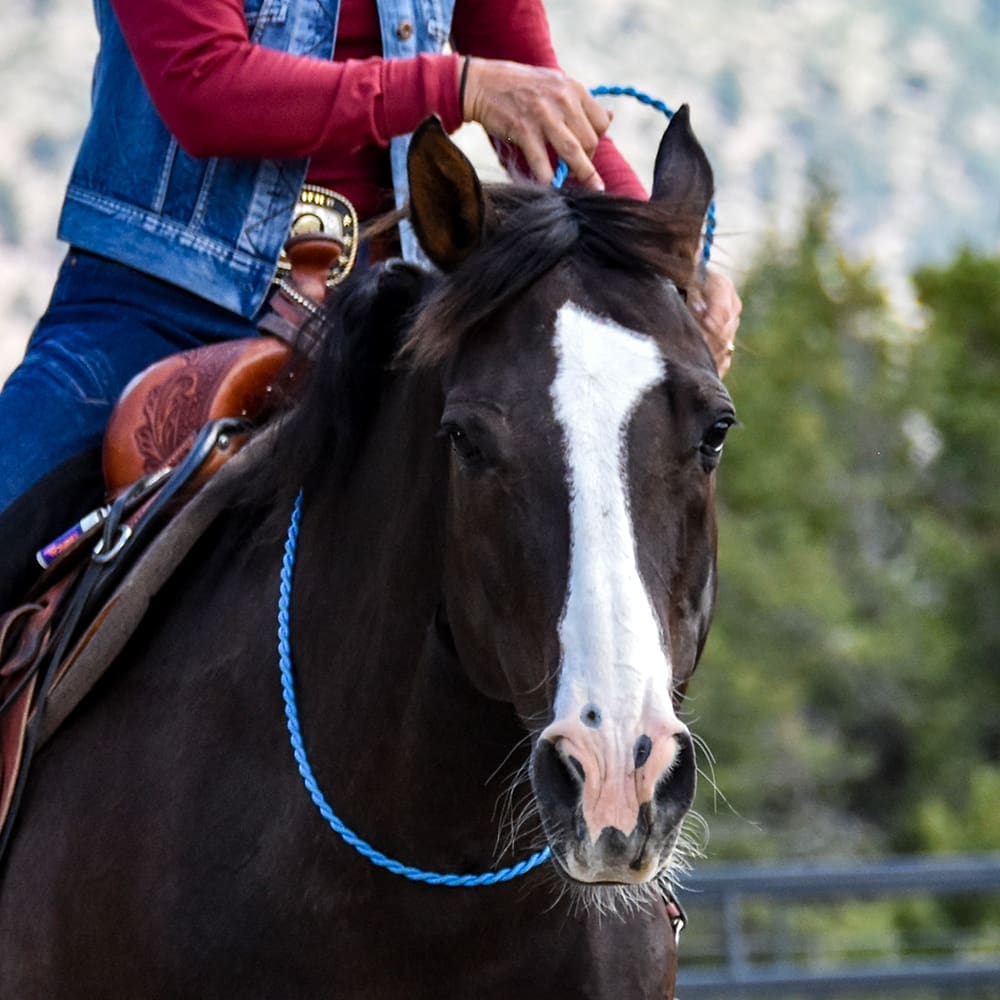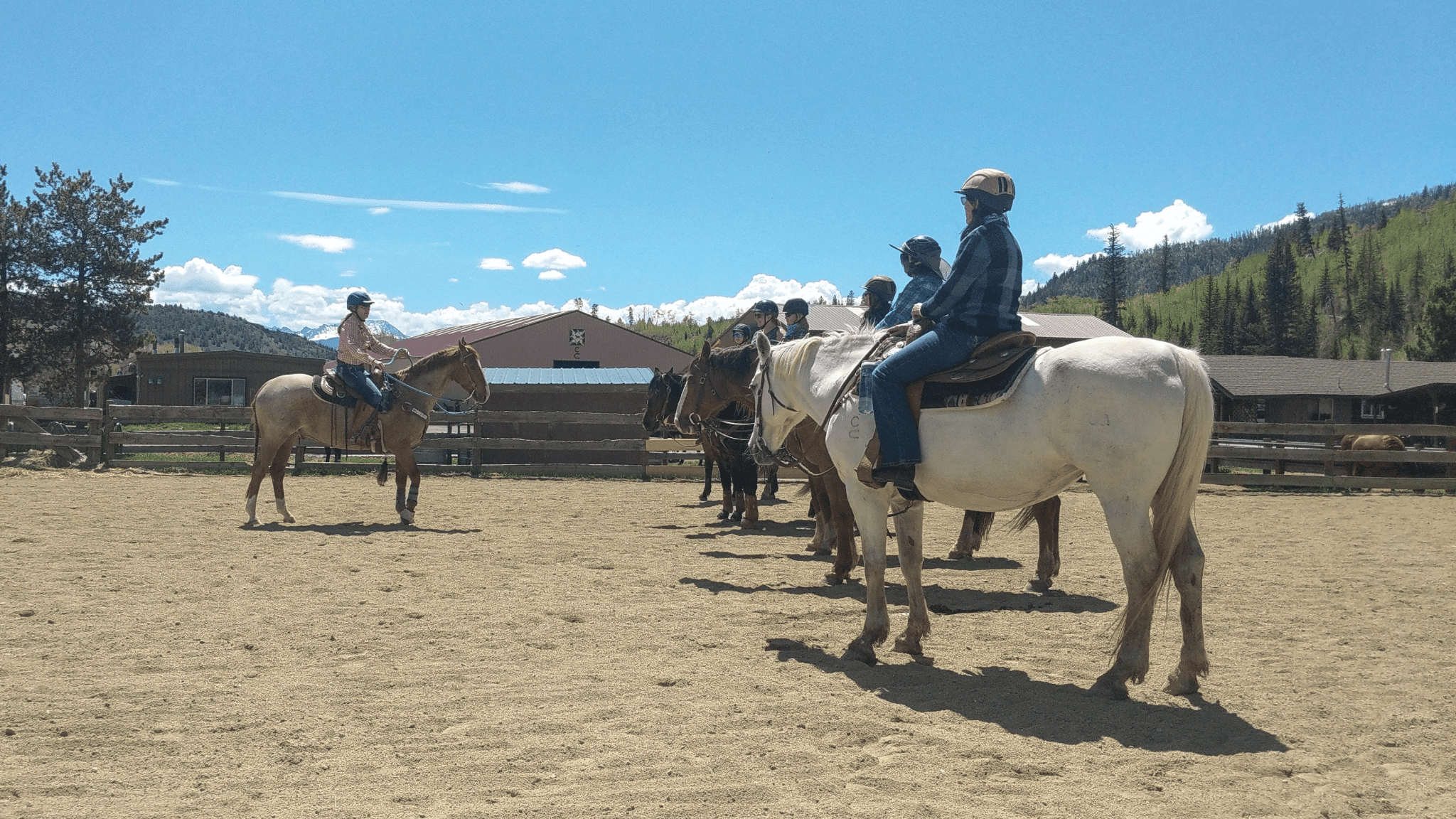
Horse in an Ergonomically Correct Myler bit with Julie Goodnight Rope Reins.
Bit selection considerably impacts horse training, comfort, and performance across all disciplines. A meticulously designed and properly fitted bit allows the rider to signal the horse with precision, facilitating maneuvers for each level of the horse’s training in a particular discipline or job. However, if a bit is unsuitable or has pressure points that interfere with the horse’s ability to swallow, the horse can’t relax and can’t easily focus on what the rider wants.
Key considerations of bit selection:
Training and discipline Different disciplines and levels of training call for different bits. A horse needs to be trained to yield (give) to light pressure, regardless of the bit that is used. If a horse is well-trained, obedient, and easy to direct, it might work better in a mild curb with tongue relief rather than a snaffle. As a general rule, well-trained mature horses prefer mild curb bits, which tend to be ridden with less pressure. The level of the rider is also a key factor in determining which bit to use on any given horse.
Comfort and ergonomics Bits should be designed to fit the horse’s mouth comfortably. For example, Myler bits are ergonomically shaped to fit the horse’s mouth and are made to give relief to the tongue and palate. The diameter of the mouthpiece (too thick or too thin) and texture of the mouthpiece (smooth or with edges) make a bit mild or harsh.
Pressure and communication It’s important to know the difference between direct pressure (snaffle) and leverage (curb) bits. Snaffles apply direct pressure to the horse’s mouth, while curb bits use leverage through shanks and a curb strap. How the rider uses their hands is very important; the mildest bit can be harsh in the wrong hands, and the harshest bit can seem mild in educated hands. Experienced riders who develop timing and “feel” know when to apply bit pressure and when to release the pressure.
Addressing training issues: Simply changing bits will not fix training problems. In particular, using a harsher bit does not give the rider more control because it will also increase the horse’s anxiety, which may lead to less control. Typically, going to a milder bit will give desirable results. Training should focus on teaching the horse to respond correctly to pressure and seek release. Release of pressure, especially bit pressure is of the utmost importance in horse training.
Mouthpiece The mouthpiece of the bit is what the horse feels on its tongue, jaw, and palate. A single-jointed mouthpiece can be very unpleasant for many horses because it squeezes the tongue and may pinch the jaw.
Sidepiece The sidepiece of the bit is more related to the discipline being ridden, how much direct contact is used, how the rider gives cues, and how subtle those cues need to be.
If a horse is not happy with its bit, it may show signs of discomfort or resistance. Recognizing these signs is crucial for ensuring the horse’s comfort and effective training. Common signs that a bit is inappropriate for the horse or rider include:
• Pulling or leaning on the reins
• Throwing the head up or carrying the head high “star gazing”
• Running through the bit on turns or stops
• Gaping the mouth
• Yawning
• Refusing to turn or threatening to buck
• Avoiding being bridled
• Rubbing the face on the leg
These behaviors and others may indicate that the bit is causing pain or discomfort, or that the horse is not properly trained to respond to bit pressure. If you notice any of the signs above, it may be helpful to switch to a more comfortable bit that is appropriate to your horse’s level of training. You may want to consider a Myler bit. Myler bits are highly engineered and ergonomically designed to fit a horse’s mouth comfortably and are designed for specific effectiveness.



